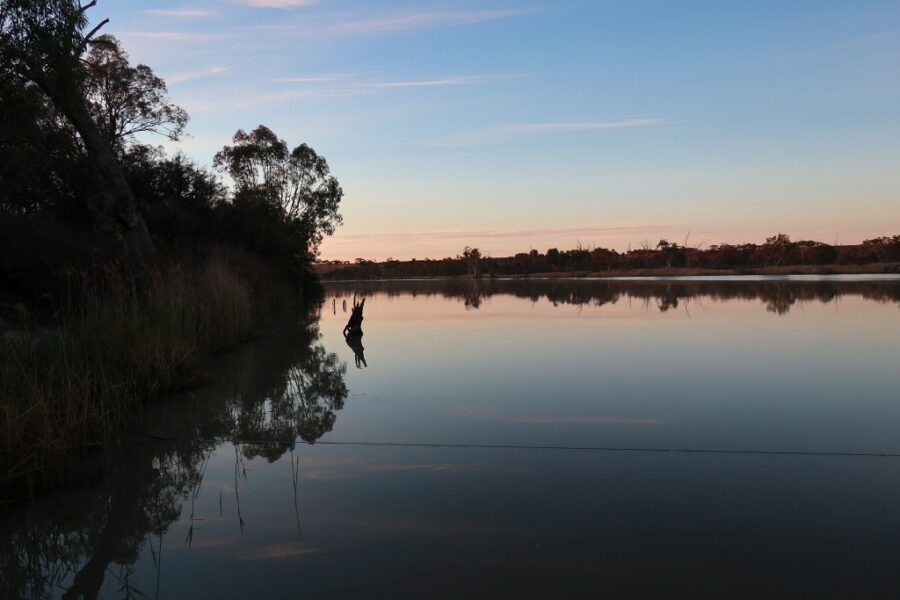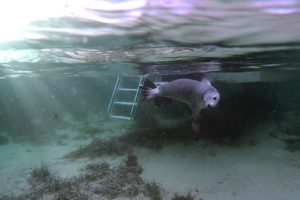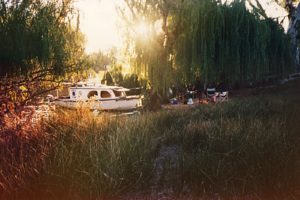Our partly restored boat has no on-board power Fred told us when we bought it. We added that to our “fixer- upper’ list. So, with no navigation lights or a working horn and darkness approaching, we decided to stay in the river town of Mannum for the night and continue onto Murray Bridge tomorrow. Our trip this far had been slow to say the least.
We were exhausted from a long day of boating in strong head winds and waves, way bigger than I could have ever imagined on a river. We were eager to find a place to moor for the night. As we got closer to the twin ferries that transport vehicle traffic across the river, I saw a small, sandy beach to the right near the caravan park. I pointed it out to Finchy. He agreed that it would be a perfect spot to stay.
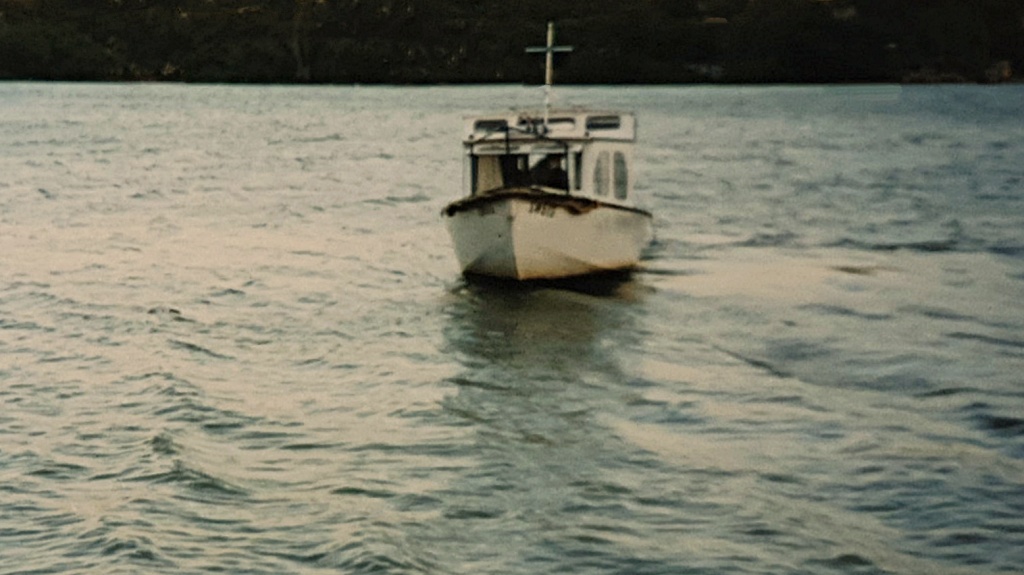
We were ‘putt-ing’ along slowly towards the beach when disaster struck. Putt-ing is the noise the old engines make. Putt, putt, putt, putt, putt, putt they go, which is a mesmerising rhythm that gets into your veins and marches alongside your heart beat as you sit and watch the world pass by.
The boat lurched violently.
We were almost thrown off our feet as it stopped dead in its tracks. I looked around in confusion. I was unsure of what had just happened.
Finchy yelled, “We’ve hit something under the water.” We were both scared. We didn’t know how much damage the boat had sustained, and we didn’t know if we would sink or swim. Finchy flew into the cabin and put the engine out of gear.
Our ‘new’ little boat doesn’t have a reverse gear or any way of going backwards making the situation even more tricky.
Huck came with two long poles. We kept them latched onto the roof along with a boat hook, a large buoy, and our flag. These had a myriad of uses Fred had told us. Mostly you’ll use them for pushing the boat away from the bank when getting underway, he’d said, but you’ll also use them for depth sounding. I remember him saying, just by putting them down vertically in the water to see if you touch the bottom or not and to see how deep it is.
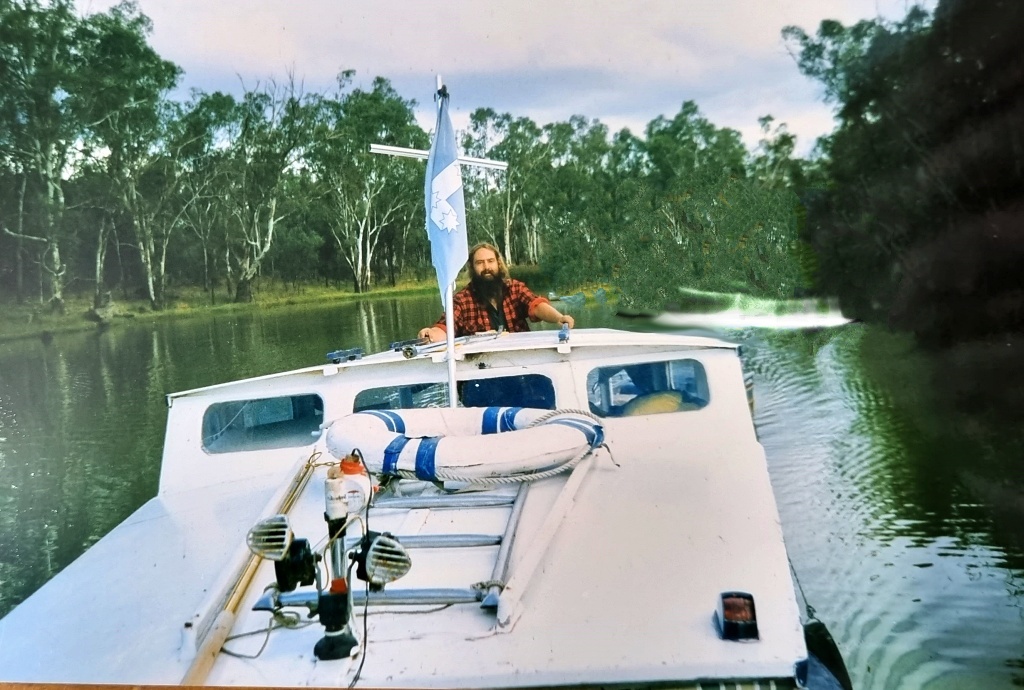
Huck Finn draws 2’2”. That is 2 foot and 2 inches which means the distance from the top of the water on the side of the boat to its deepest point on the keel. If you didn’t have 2’2” or more of water under the boat it means you’ve run aground.
Another way to use the poles was to assist another boat to come alongside. The people on the other boat could reach out and grab our poles to gently bring the two boats together he’d said.
Finchy acted without thinking and so did I.
We’d always made a great team under pressure. We each grabbed a pole and holding onto a top rail with one hand and the end of our poles with the other, we leant down as far as we could and depth-sounded each side of the boat at the same time and found we were in 6ft of water.
Quickly we told each other the depths across the roof of Huck and Finchy said, “Well, we haven’t run aground, I’ll go up the front and have a look, you check out inside the cabin”.
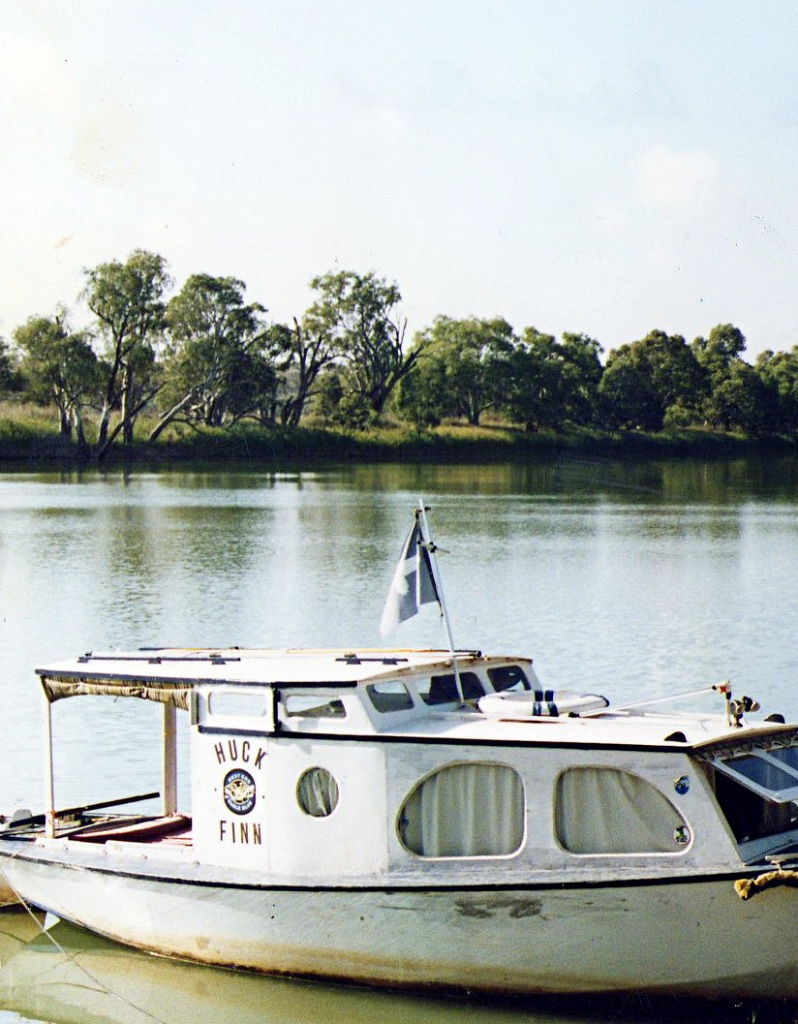
As I stepped into the cabin, the water was already covering the floor, mostly around the step/come engine cover in the middle of the boat. We haven’t run aground I thought, but were definitely taking on water. I could hear the Blaxland ticking over still. I pulled the lid off the step to see the engine and saw river water laying in the bottom of the boat around it. In desperation, I looked around to try and find something to bail the water out with, but all I could find was an old coffee cup.
“We’re stuck,” Finchy told me as we both met back under the rear deck. “As far as I can tell we’ve rammed into an old training spur or an old steel fence post. I need to push her off”.
Standing near the cabin door I realised I couldn’t hear the Blaxland any more. It had stalled. No wonder, the water was rising fast. Stepping down into the cabin over the open engine box, I grabbed the old foam cushion from the left-hand side and chucked it onto the right bunk behind me. I pulled the front two wooden seat covers out by putting my index finger into a small round hole in each one. These holes were made especially for lifting the covers out for access to storage under the seats, their framing and the interior of the hull. The water was now up to my ankles at the front of the boat. I turned to Finchy to tell him what I could see but he wasn’t there.
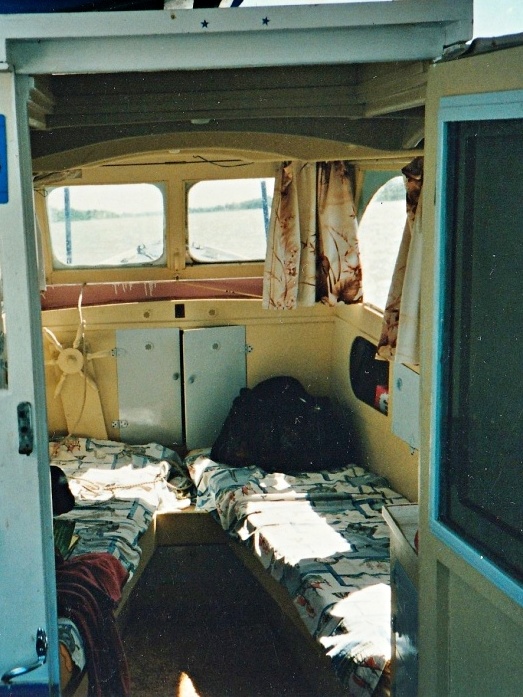
While I was in the cabin, Finchy used the boat hook, and by pushing and pulling, managed to free Huck from the rusty sword that had impaled her. Using his pole again from the back, he pushed the boat forwards a short way. Depth sounding once more and in about four feet of water, he’d jumped out.
“There’s a hole up the front on the left” he yelled. After jumping overboard, he made his way to the front of the old wooden boat and discovered the hole by running his hands along the hull under the waterline.
“Linda”, he yelled at me, “What’s it look like in there?”
Not hearing him very easily, I knelt on the front seating near the doors into the bow storage area and unlatched the large rectangle front window. Hanging from its hinges at the top, I pushed the bottom of the window forwards, propping it up and securing its holding rod in the special slot on the front deck.
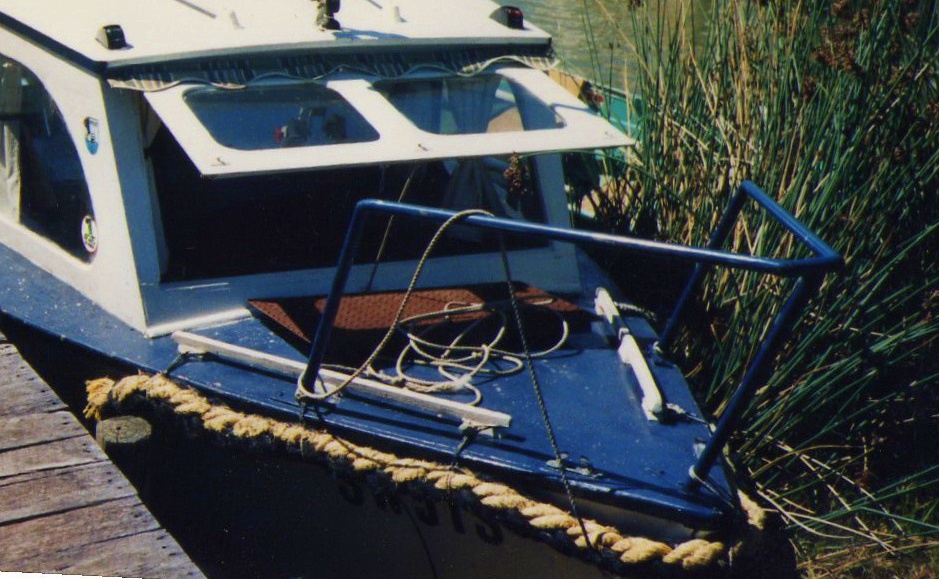
“There’s lots of water, it’s covering all of the floor,” I yelled back with my head near the now open window.
“Can you see the hole”, he asked. Putting my bare feet back into the cold rising water on the floor, I sat on the timber seat framing and dropped my shoulder into the compartment so my right hand could reach to the hull. It was dark and my hand was under water. I felt the hole. It was round, and large enough that my hand and arm went straight through it out into the river. It felt extremely eerie. I shivered. If Finchy had his hand there at the same time we could have touched, one inside and one outside the boat.
I got up quick. I needed to find something to fill the hole.
A bundled pair of explorer socks was the only thing within arms reach that seemed about the right size, so I wrapped them in a plastic shopping bag and wedged them into the hole. It slowed the flow, but we had taken on quite a bit of water.
Our hearts were racing. We were stalled and slowly sinking in a large shallow body of water just off the rivers main channel. We knew we had to keep the boat afloat until it reached the shore. I’d suppressed the flow of murky brown water with the socks but we weren’t out of trouble yet.
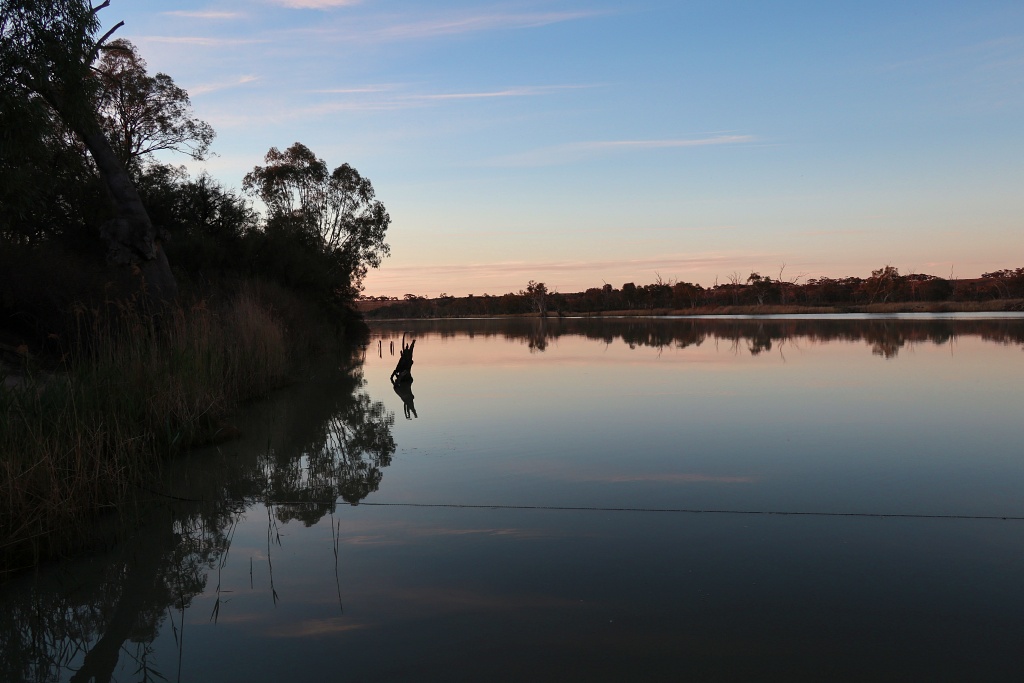
Finchy came back into the cabin and tried to get the engine going again. It had given him grief all day, not running properly, even though he had “adjusted the mixture” regularly like Fred had instructed. He was pulling the starter rope like a man possessed and then suddenly it fired up. The flywheel started flicking water everywhere and with a quick check, I confirmed the water was coming out of the exhaust.
In exasperation Finchy said, “We’ve got one shot at getting her to shore”. We could see the small beach ahead and our boat Huck Finn started to move.
With the engine partly submerged and the whole vessel sitting lower in the water, we drove the boat as far up the beach at the caravan park as we could. Finchy jumped out again into thigh deep water and pulled the boat further up with the bow rope. He leant Huck to the right on her keel to keep the breach in the hull exposed to prevent us taking on any more water.
Finally, after what felt like an eternity, we had made it to shore. We were both relieved and exhausted. We had survived, but we knew we had been lucky.
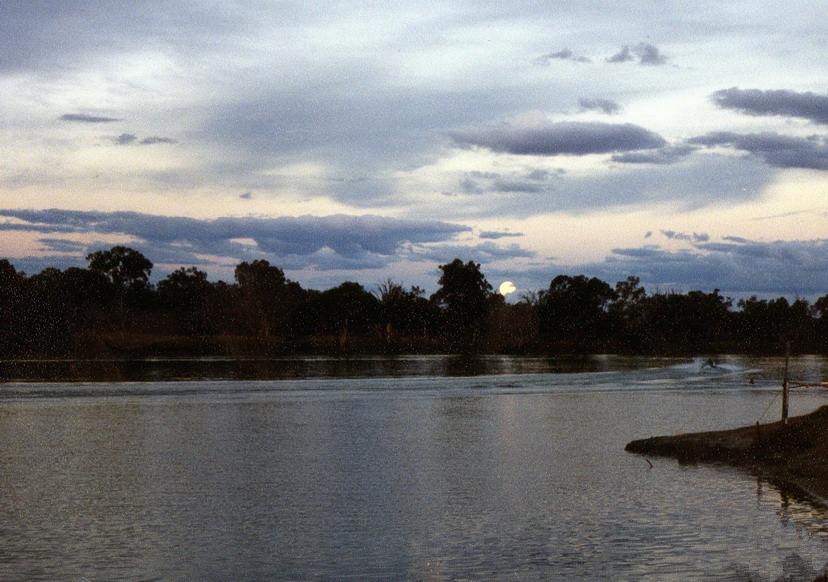
We both looked at each other in shock at what has just transpired. We were both shaken, but we were alive. And that was all that mattered. Finchy stood on the beach for a few minutes, catching his breath, then yelled he was going to the caravan park to find a phone box and call for help.
We didn’t know what else to do.
I waited with Huck, staying on the righthand side to keep the hole above water. Even though I was shaken, I felt very pleased her keel was sitting on the sandy bottom and the majority of the boat was above water. Salvageable once again I thought. Playing the alternative through my mind I shuddered. If we had decided to try to move Huck across to the other side of the river, we might have stalled mid-stream. We might have made it to the moorings near the willows but the water is much deeper there and without on-board power or a bilge pump, Huck would surely have gone to a watery grave a second time.
Click the link below for the next episode.
Or click on the tag below ‘Floating through River Life’ below to see all Episodes

